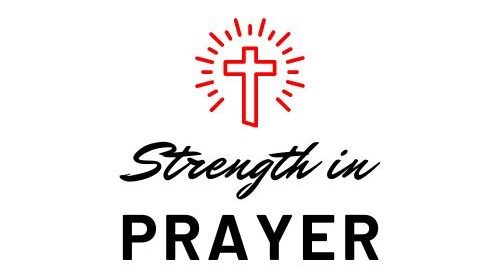
The Bible often uses figurative language to convey profound truths. Understanding these literary devices enhances comprehension and appreciation of sacred texts. In this article, we’ll explore 12 examples of figurative language found in the Bible, each shedding light on its teachings and narratives. These devices include simile, metaphor, personification, hyperbole, anthropomorphism, symbolism, allegory, parable, irony, euphemism, oxymoron, and synecdoche.
By studying these examples we can deepen our understanding of the Bible’s messages and the cultural context in which they were written. Let’s dive in and begin our study of the examples of figurative language in the Bible.
Examples of Figurative Language in the Bible
#1. Simile
Simile, a comparison using “like” or “as”, is frequently employed in the Bible to vividly illustrate similarities between disparate entities.
Example:
In Psalms 1:3, it states, “He is like a tree planted by streams of water, which yields its fruit in season and whose leaf does not wither.”
This simile portrays the righteous person as akin to a steadfast tree, drawing sustenance from a constant source and bearing fruit in due season.
#2. Metaphor
Metaphor, a figure of speech equating one thing with another, is a powerful tool used by biblical authors to convey deeper truths.
Example:
Jesus says in John 10:7, “I am the door of the sheep.”
This metaphorical statement underscores Jesus’s pivotal role as the exclusive means of access to salvation and protection for believers, emphasizing the intimacy of the relationship between Christ and His followers.
#3. Personification
Personification, attributing human characteristics to non-human entities or abstract concepts, adds depth and relatability to biblical passages.
Example:
Proverbs 8:1 personifies wisdom, saying, “Does not wisdom call out? Does not understanding raise her voice?”
This personification animates wisdom, depicting it as an active and compelling force that beckons and invites seekers to embrace its guidance and insights.
#4. Hyperbole
Hyperbole, the deliberate use of exaggeration for emphasis or effect, is employed by biblical authors to underscore the gravity of certain teachings and commands.
Example:
In Matthew 5:29-30, Jesus uses hyperbolic language to emphasize the seriousness of avoiding sin: “If your right eye causes you to stumble, gouge it out and throw it away… And if your right hand causes you to stumble, cut it off and throw it away.”
This extreme imagery serves to underscore the urgent necessity of radical measures to eradicate sin from one’s life, highlighting the paramount importance of holiness and purity.
#5. Anthropomorphism
Anthropomorphism, attributing human characteristics to God or other divine beings, serves to make the divine more relatable and accessible to human understanding.
Example:
Psalm 91:4 says, “He will cover you with his feathers, and under his wings you will find refuge.”
This anthropomorphic imagery portrays God as a nurturing and protective figure, likened to a bird sheltering its young under its wings, offering comfort, security, and shelter to those who seek refuge in Him
#6. Symbolism
Symbolism in the Bible involves using objects, actions, or events to represent deeper meanings or truths.
Example:
In Genesis 22:1-14, the story of Abraham’s sacrifice of Isaac is rich with symbolism. The ram caught in the thicket serves as a symbol of substitutionary atonement, prefiguring the ultimate sacrifice of Jesus Christ on the cross.
#7. Allegory
Allegory is a narrative in which characters and events symbolize deeper spiritual truths or moral lessons.
Example:
The Parable of the Sower in Matthew 13:1-23 is an allegory where the different types of soil represent the varying responses of people to the message of the kingdom of God.
#8. Parable
A parable is a brief story used to illustrate a moral or spiritual lesson.
Example:
In Luke 15:11-32, Jesus tells the Parable of the Prodigal Son to teach about God’s forgiveness and the restoration of the repentant sinner.
#9. Irony
Irony involves expressing the opposite of what is expected or intended, often for humorous or emphatic effect.
Example:
In 1 Kings 18:27, during the showdown between Elijah and the prophets of Baal, Elijah mocks the prophets, saying:
“Shout louder! Surely he is a god! Perhaps he is deep in thought, or busy, or traveling. Maybe he is sleeping and must be awakened.”
This ironic statement highlights the absurdity of worshiping false gods.
#10. Euphemism
Euphemism involves substituting a mild or indirect expression for one that may be considered harsh or unpleasant.
Example:
In Genesis 15:15, God tells Abraham that he will “go to his ancestors in peace” instead of explicitly stating that he will die. This euphemism softens the harsh reality of death.
#11. Oxymoron
An oxymoron is a figure of speech that combines contradictory terms for emphasis or effect.
Example:
In Matthew 10:39, Jesus says, “Whoever finds their life will lose it, and whoever loses their life for my sake will find it.”
#12. Synecdoche
Synecdoche is a figure of speech in which a part is used to represent the whole or vice versa.
Example:
In Matthew 27:46, Jesus cries out on the cross, “My God, my God, why have you forsaken me?”
Here, the term “God” is used synecdochically to refer to the divine Trinity as a whole, emphasizing Jesus’s sense of abandonment and separation from the Father as he bears the weight of humanity’s sin.
Closing Thoughts
Understanding the figurative language employed in the Bible enriches our comprehension of its timeless wisdom and profound truths. Each literary device serves a distinct purpose, whether it’s to convey deeper spiritual meanings, illustrate moral lessons, or emphasize important concepts. By recognizing and interpreting these devices, readers can glean greater insights into the narratives, teachings, and themes woven throughout the biblical text. As we continue to explore the Bible’s rich tapestry of language and imagery, may we approach it with reverence, humility, and a desire for deeper understanding.
